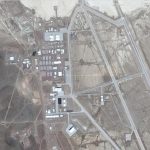The Moon
When you look up in the night sky, the first thing that stands out is the moon. On a clear night, it is very visible, and it lights up the night sky. Even though the moon is so far from the Earth, we can still see it at night. There are certain times of the year that the moon is also visible during the day.
The Distance Between the Moon and Earth
The distance between the moon and Earth is 238,900 miles. In a spacecraft, it takes about three days to reach the moon. The distance to the moon is about ten times the circumference of the Earth. If it were possible to drive to the moon in a car, you would need to drive 60 miles per hour, 24 hours a day, for six months.
The Ocean
Although the moon is located so far from Earth, it has a significant impact on our plant. The moon has a considerable effect on the ocean currents and the waves. Amazingly, something so far out in space can affect our plant so significantly.
Landing On the Moon Conspiracy Theory
It has been 50-years since we have landed on the moon. Unfortunately, the astronauts responsible for making this historic journey have been called liars by conspiracy theorists. There are people who believe that nobody has ever walked on the moon and that it was all faked by the government. These people say that because the flag that was planted on the moon appeared to be blowing in the wind that it was faked because there is no wind on the moon. These people believe that the whole thing was faked at Area 51.
Unknown Facts
Anyone with half a brain knows that the moon landing was real. In fact, astronauts have brought back hundreds of pounds of lunar rocks from the moon. The only way we could have possession of these rocks is if we have actually walked on the moon. Even though it has been 50-years since that first moon landing, NASA is still learning new things about the moon. Here are 5 strange, cool things we’ve recently learned about the moon.
There Is Water And It Jumps Around
In 2009, NASA received data from the Lunar Reconnaissance Orbiter. This data showed that there was water on the moon, locked up in ice. NASA recently made an upgrade to the orbiter, called the Lyman Alpha Mapping Project, which has allowed them to get a much better view of the water on the surface of the moon. It has been revealed that water molecules move around the moon as the surface warms and cools throughout the day. The water remains stuck in the moon until midday, and then the water melts. It floats around a bit before settling back into the surface when the moon cools down.
A Dense Blob Of Metal Lies Below The Surface Of the Moon’s South Pole
NASA has discovered a heavy metal lodged in the mantle of the moon at its South Pole, also known as South Pole-Aitken basin. It is believed that this metal can alter the moon’s gravitational field. It is thought that the metal weighs around 2.4 quadrillion tons. And it is unknown how this metal became trapped underneath the lunar surface; however, simulations suggest that is what is leftover from an iron-nickel asteroid that crashed into the far side of the moon over four billion years ago.
The Moon Is Shrinking An Quaking
The moon is not only shrinking, but moonquakes are also common. Scientists have gathered moonquake data from 1969 to 1977. The data showed that about 25 percent of the moonquakes are generated by a release of energy from faults on the moon. Previously, it was believed that asteroid impacts caused the moonquakes, but the data has shown that this may not be the case.
You Won’t Strike It Rich On the Moon
About 4.5 billion years ago, a planet the size of Mars, called Theia, slammed into the proto-Earth, which blasted a tremendous amount of material from both into space. Some of it was incorporated into the bruised and broken Earth, and the rest formed the moon. What is strange is that precious metals, such as gold and platinum embedded into the Earth, but not the moon.
The Moon Is Two-Faced
The moon has two faces, and they look entirely different. On one side is a thin, smooth crust. The other side has a thicker crust that is dotted by the impacts of craters over the years. If you were to walk on both sides of the moon, you would think that you were walking on a completely different planet.


